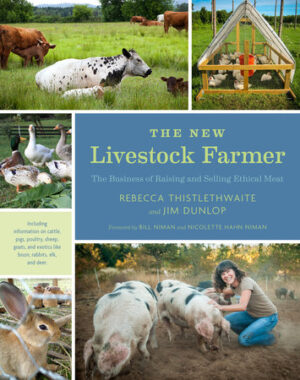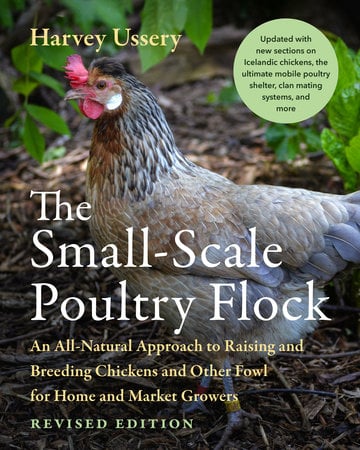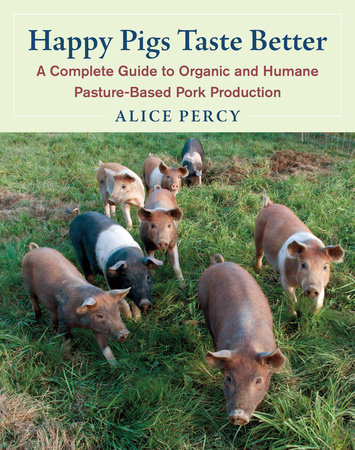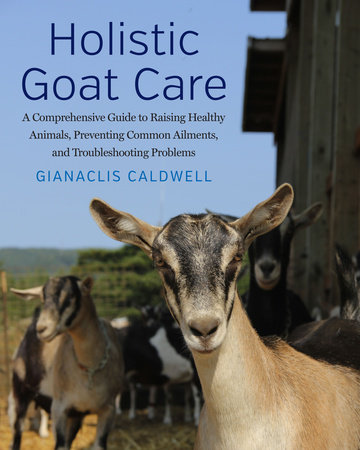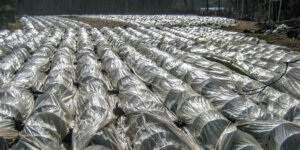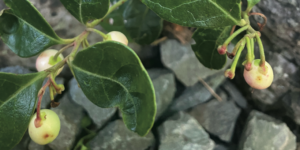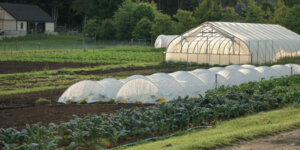Perfect Pigs: Which Pig Breed Is Best?
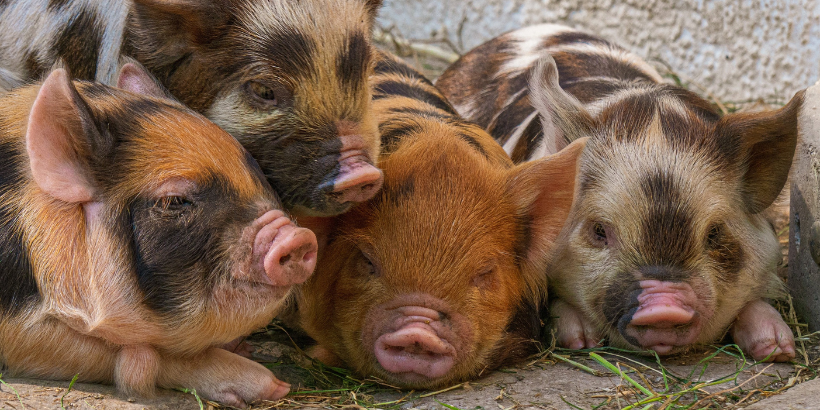
Every homestead or farm could use a few pigs! Add a little “oink” to your life by raising your own.
Don’t know where to start? Here are some tips for deciding which pig breed is best for your farm or homestead!
The following is an excerpt from The New Livestock Farmer by Rebecca Thistlethwaite and Jim Dunlop. It has been adapted for the web.
Which Pigs Are Best for Your Farm?
Of course it must be said that there are often more differences within a breed than between breeds, but we’ll attempt to make some somewhat accurate generalizations about the different types of pigs.
Choosing Pigs: Breed Vs. Performance
Instead of looking for a certain breed of pig, try to find pigs that will perform under the conditions on your farm and produce the type of meat preferred by your market.
White pigs will sunburn in summer when raised outdoors. White pigs often don’t have very much hair, which makes them less suited for outdoor production systems but easier to scald and scrape on the processing end of things.
Pig Personalities
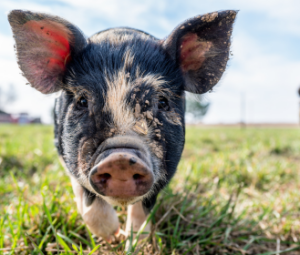
Generally a heritage breed pig is going to be calmer than a lean and fast-growing “confinement- type” pig.
Pigs can be really fun and friendly, or high-strung and aggressive—what kind of animals do you want to spend time with? Do you want pigs that will come up to you for a scratch or pigs that are more aloof?
Cross-Breeding Pigs
If you are raising pigs for meat, you will likely want to cross-breed to capitalize on the heterosis (hybrid vigor) provided by your cross.
If you plan on cross-breeding or buying in weaner pigs, you should have an understanding of the various pig breeds, their different temperaments, how big they get, their foraging ability, and their meat qualities. We will cover some of our favorite heritage and conventional pig breeds.
Heritage Breeds
Heritage breeds generally have more fat than conventional breeds and take longer to grow to market weight.
They are suitable for niche markets and generally have more backfat and intramuscular fat, so you will have to be clever about using the whole animal and finding markets for the fat.
Many of them are considered exceptional foragers, are hardy in a wide range of conditions, and possess excellent mothering abilities.
Berkshire
Medium-sized, long, black pigs with white points and prick ears. Although Berkshires are considered a heritage breed, the modern heavily muscled American Berkshire looks nothing like its short-snouted British relatives.
They have been bred to be large, heavily muscled, and fast-growing, just like other conventional breeds. The only difference is their ability to build considerable intramuscular fat marbling, making for tasty and juicy pork that is sometimes sold as “Kurubota pork.”
Good for using as terminal sire, lean meat production, cross-breeding, hardiness, and ability to produce in a variety of settings.
Tamworth
Red pig with prick ears, long lean body, and long snout. Tamworths are more lean than other heritage breeds, and are known for producing high-quality bacon.
They are good, protective mothers that often kneel and lie down gently. We have raised a lot these pigs and find them to be strong foragers and very hardy. We love the cross of Tamworths with Gloucestershire Old Spots, both for market hogs and replacement gilts.
Gloucestershire Old Spots
Large, curvy white pig with a few black spots and big lop ears. Known as an orchard pig in England, they are a docile pig that produces a lot of fat. They are hesitant to cross an area with a removed electric fence because of limited visibility.
Old Spots require patience when handling because ears reduce vision and their default is to stand still rather than run. Good for maternal lines, foraging ability, meat production, and lard.
American Guinea Hog
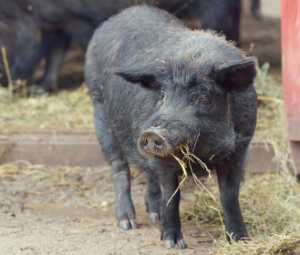
We have raised Guinea Hogs and are amazed at their willingness to forage all day. They are the most docile pigs that we have raised, almost like pets. They love belly rubs. Good for small, easy to handle carcasses, lard, and making cured products.
They have the smallest percentage of lean meat—roughly 40 percent of their carcass is lean meat.
Large Black
Docile, medium-sized black pigs with big lop ears. Good for bacon, cured meats, and production in rough conditions. Large Blacks are good mothers with lots of milk, are good foragers, and can raise large litters outdoors.
Red Wattle
Large red pig with wattles under chin. This is not a very improved or standardized breed, therefore there is consider- able variation. Some may take 6 months to grow out, others 10. They are known to be good foragers and hardy in a wide range of conditions.
Cross-breeds
Some favorite cross-breeds we have seen and farmers have told us about include: Tamworth (lean, bacon pig) crossed with Gloucestershire Old Spot (lard-type pig), Large Black with Tamworth, Berkshire with Tamworth, and Large Black with Red Wattle.
Conventional Breeds
Conventional pigs are generally leaner than heritage pigs and grow faster.
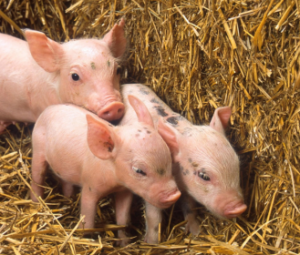
If you are going to use these breeds in your program, look for lines that have been raised on pasture for many generations. They may make a nice addition to a cross-breeding program.
American Yorkshire
Large white pig with prick ears. Good for bacon, ham, lean pork, maternal milk production, and large litters.
Hampshire
Black pig with white band around the middle. Good for hardiness, terminal sire, meat production, and foraging ability. High-energy, aggressive personality.
Chester White
Known for high conception rates and large litters with heavy weaning weights. Often used in cross-breeding programs. Produces heavily muscled offspring.
Duroc
Large, athletic-looking red pig with slightly drooping ears. Good for hardiness, foraging ability, meat, terminal sire, unequaled conversion rate of feed to meat, and protective mothers.
They are most commonly used as a terminal sire because their fecundity rates are inferior (small litter sizes). Even the famous Iberian pigs are now using Duroc boars for 50 percent crosses because they grow bigger, meatier, and faster than 100 percent Iberian genetics.
Recommended Reads
Getting Started Raising Pigs: Raising Piglets and Piglet Management
Recent Articles
Want to grow year-round, but a greenhouse feels like a big investment? When it comes to cost and flexibility, low tunnels are the all-around winners.
Read MoreWintergreen is the stunning evergreen groundcover that’s a game-changer for your garden! It’s cherished for its aromatic leaves, vibrant fall color & bright berries.
Read MoreGrow winter carrots for a sweeter & more flavorful harvest! Ditch the bland, store-bought carrots this winter! Grow your own winter carrots for a sweeter and more flavorful twist 🥕🥕
Read MoreSearching for the perfect book to give the homesteader in your life? We’ve got your go-to books for anyone interested in organic growing, permaculture, soil health, year-round growing & more! What’s their next great read?
Read MoreWinter is coming… but that doesn’t mean you should put away those tools just yet. Extend the growing season well past the first frost!
Read More

